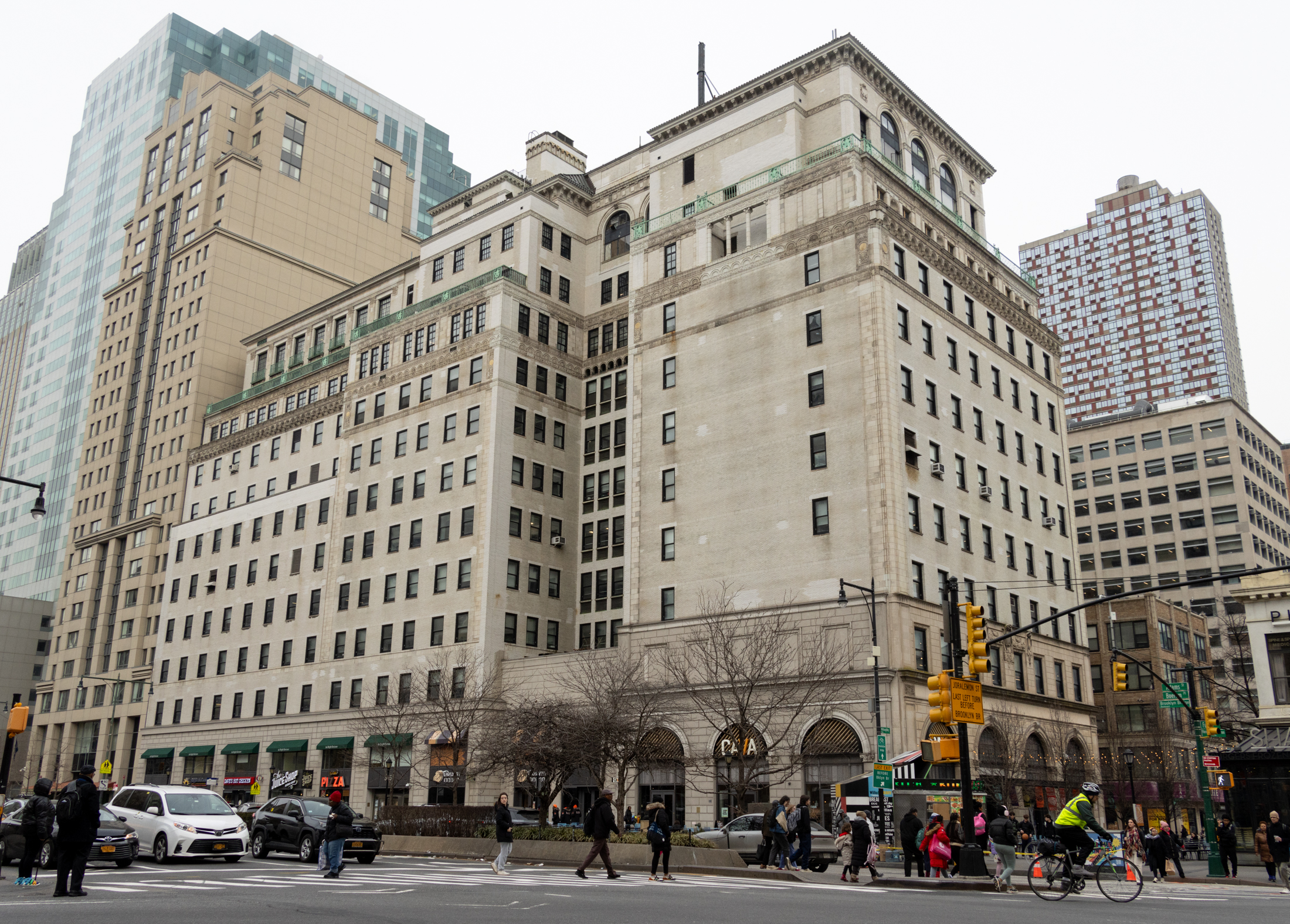Building of the Day:138 Montrose Avenue
Brooklyn, one building at a time. Name: Most Holy Trinity Catholic Church Address: 138 Montrose Avenue Cross Streets: Manhattan and Graham Avenues Neighborhood: East Williamsburg Year Built: 1882-85 Architectural Style: French Neo-Gothic Architect: William Schickel Other works by architect: In Brooklyn – St. Thomas Aquinas, Park Slope, All Saints, nearby on Throop Ave. In Manhattan…

Brooklyn, one building at a time.
Name: Most Holy Trinity Catholic Church
Address: 138 Montrose Avenue
Cross Streets: Manhattan and Graham Avenues
Neighborhood: East Williamsburg
Year Built: 1882-85
Architectural Style: French Neo-Gothic
Architect: William Schickel
Other works by architect: In Brooklyn – St. Thomas Aquinas, Park Slope, All Saints, nearby on Throop Ave. In Manhattan – Stuyvesant Polyclinic Hospital on 2nd Ave, Church of St. Ignatius Loyola, Park Ave, and others.
Landmarked: No
The story: I first time I saw the lead-clad spires of this church rising over East Williamsburg, I had to see what was underneath them. The design looked so modern and science fiction-like, a church clad in armor. Imagine my surprise to get much closer find a huge French Gothic church underneath! When built, Holy Trinity was one of the largest church buildings in either Brooklyn or Manhattan. The towers are 250 feet tall, and rise over a neighborhood that once, like the church itself, was almost exclusively German. The history of this church and parish is an interesting one, and even has ghosts!
The origins of this church lie in the Austrian Tirol Mountains, home to the church’s founder, John Stephen Raffeiner, a man who became a soldier, successful doctor, then at the age of 40, a priest. He immigrated to the US in 1833, and was one of the founders of Manhattan’s St. Nicholas parish, the oldest German Catholic parish in NYC.
The man was a powerhouse of activity, travelling upstate and to Boston to minister to the growing numbers of German immigrants in the Northeast. He was asked to go to Brooklyn, and he settled into Williamsburg in 1841, where he established Most Holy Trinity as the first German Catholic parish in Brooklyn. Fr. Raffeiner was appointed Vicar-General to the greater German community, a post he held for the rest of his life.
In 1853, the first Most Holy Trinity Church was built at the corner of Montrose and Graham, a frame church structure. Father Raffeiner died in 1861, and the parish continued under his assistant, Father Michael May, who had been born in Bavaria. The population of German Catholics continued to grow, and in 1882, the frame church was torn down, and Father May himself helped lay the cornerstone of this new church.
The church was designed in the French Gothic style, with hints of German Gothic styling, by William Schickel, an extremely talented German-born architect, who came to America at the age of 20, in 1870, and began working for the influential architectural giant, Richard Morris Hunt, the day after getting off the boat. He partnered with William Ditmars, and the team designed homes and other buildings, but are best known for their many works for the NYC dioceses of the Catholic Church. This one, however, he did on his own, importing the stained glass windows from the Albert Neuhauser Mosaic Firm in Innsbruck, Austria, in 1884 and 1885. It’s an incredibly beautiful church inside, enhanced by those 34 beautiful stained glass windows, but its Gothic stone façade is now marred by the enclosure of those spires in 1990, clad in copper and lead sheathing because of structural damage.
The church is oddly well known as being haunted, as well, said to be visited by the ghosts of parishioners who were once buried in the churchyard that stood next to the old church, that is, right below this building. Before the church was built, the cemetery was moved, but some say they missed a few bodies, and their ghosts now roam the rooms below. Another ghost is that of George Stelz, a sexton and bell ringer who was murdered in the vestibule, in 1897. His murder was never solved, and he’s said to appear once in a while, still ringing the bells. People have also reported seeing the ghost of Father May, who died peacefully in his sleep here in 1895. He appears in his old room, apparently just checking in on the parish he loved and served so well.
Lastly, Most Holy Trinity is mentioned in Francis Smith’s classic, “A Tree Grows in Brooklyn”. She writes in 1943: “Francie thought it was the most beautiful church in Brooklyn. It was made of old gray stone and had twin spires that rose cleanly into the sky, high above the tallest tenements. Inside, the high vaulted ceilings, narrow deepset stained-glass windows and elaborately carved altars made it a miniature cathedral.” GMAP













beautiful building. the interior is unusual for an American church.
unfortunately for us, local brownstone is one of the worst building materials ever quarried and our climate and pollution is very hard on building stone of all kinds. Cladding the turrets and upper steeple was probably the only way to stop leaks and prevent further deterioration.
beautiful building. the interior is unusual for an American church.
unfortunately for us, local brownstone is one of the worst building materials ever quarried and our climate and pollution is very hard on building stone of all kinds. Cladding the turrets and upper steeple was probably the only way to stop leaks and prevent further deterioration.